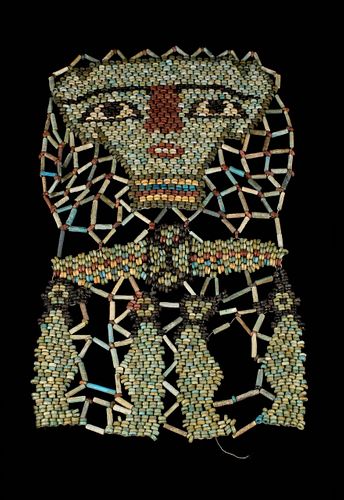AN EGYPTIAN FAIENCE MUMMY SHROUD WITH FOUR SONS OF HORUS
Lot 3A
Estimate:
GBP£600 - GBP£900
$810.81 - $1,216.22
Absentee vs Live bid
Two ways to bid:
- Leave a max absentee bid and the platform will bid on your behalf up to your maximum bid during the live auction.
- Bid live during the auction and your bids will be submitted real-time to the auctioneer.
Bid Increments
| Price | Bid Increment |
|---|---|
| GBP£0 | GBP£10 |
| GBP£100 | GBP£10 |
| GBP£200 | GBP£20 |
| GBP£500 | GBP£50 |
| GBP£1,000 | GBP£100 |
| GBP£2,000 | GBP£200 |
| GBP£5,000 | GBP£500 |
| GBP£10,000 | GBP£1,000 |
| GBP£20,000 | GBP£2,000 |
| GBP£50,000 | GBP£5,000 |
| GBP£100,000 | GBP£10,000 |
| GBP£200,000 | GBP£20,000 |
| GBP£1,000,000 | GBP£50,000 |
About Auction
By Apollo Art Auctions
Jan 16, 2022
Set Reminder
2022-01-16 08:00:00
2022-01-16 08:00:00
America/New_York
Bidsquare
Bidsquare : Ancient Art & Antiquities
https://www.bidsquare.com/auctions/apollo-art-auctions/ancient-art-antiquities-8043
Apollo Art Auctions enquiries@apolloauctions.com
Apollo Art Auctions enquiries@apolloauctions.com
- Lot Description
Late Period, Circa 664 -332 BC An ancient Egyptian mummy shroud of beadwork from the chest of a mummified person, consisting of a net of dark green barrel and light green tubular beads with green ring of beads to forming the face, the skin made of green beads, the nose formed of yellow beads and mouth formed of red beads, a winged scarab pectoral and four sons of Horus: from the chest of a mummified person, consisting of a net of black barrel and green tubular beads with yellow ring beads. Below the mask is a a beaded pectoral winged scarab, a symbol of rebirth and generation. Beneath, are the Four Sons of Horus, Imsety, Duamutef, Hapi, Qebehsenuef. Protectors of the organs of the deceased. Shrouds of this type became popular in the Late Dynastic Period all the way through the Ptolemaic period and had both decorative and more importantly a symbolic use, as the burial was a highly magical process. To the Egyptians rebirth and the accession into the afterlife was more important than the life they firstly lived. The afterlife was eternal, so every precaution was taken in order to achieve eternal life. The face mask is interpreted to represent Osiris the god of the afterlife, rebirth and regeneration. In mythology, Osiris was also a dead being. Winged scarabs were usually modelled in faience and placed as pectoral embellishment on the chest of the mummy. In this case, the scarab, symbol of re-birth and regeneration, has been sewed together with the mummy mask. Manley, B and Dodson, A., (2010) Life Everlasting. National Museums Scotland Collection of Ancient Egyptian Coffins (Edinburgh: NMS Enterprises Ltd.), Cat.43, p. 115 For similar see National Museums of Scotland; Accession Number: A.1906.384Size: L:240mm / W:150mm ; 89.2gProvenance: From the collection of a London gentleman; formerly acquired in early 2000s; previously in 1970s UK collection.
- Shipping Info
-
We offer in-house packing and international shipping at discounted rates.
-
- Buyer's Premium



 EUR
EUR CAD
CAD AUD
AUD GBP
GBP MXN
MXN HKD
HKD CNY
CNY MYR
MYR SEK
SEK SGD
SGD CHF
CHF THB
THB















